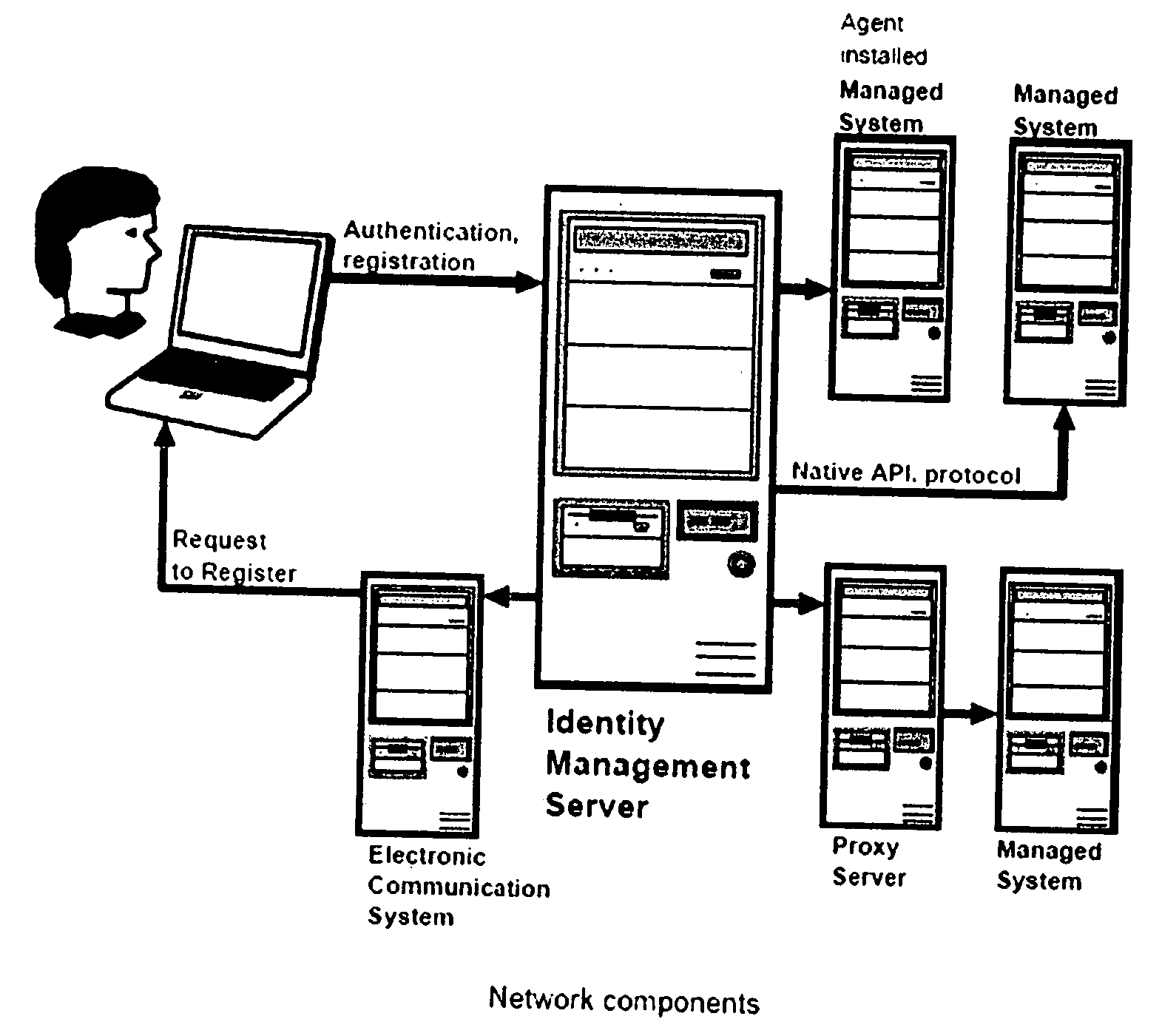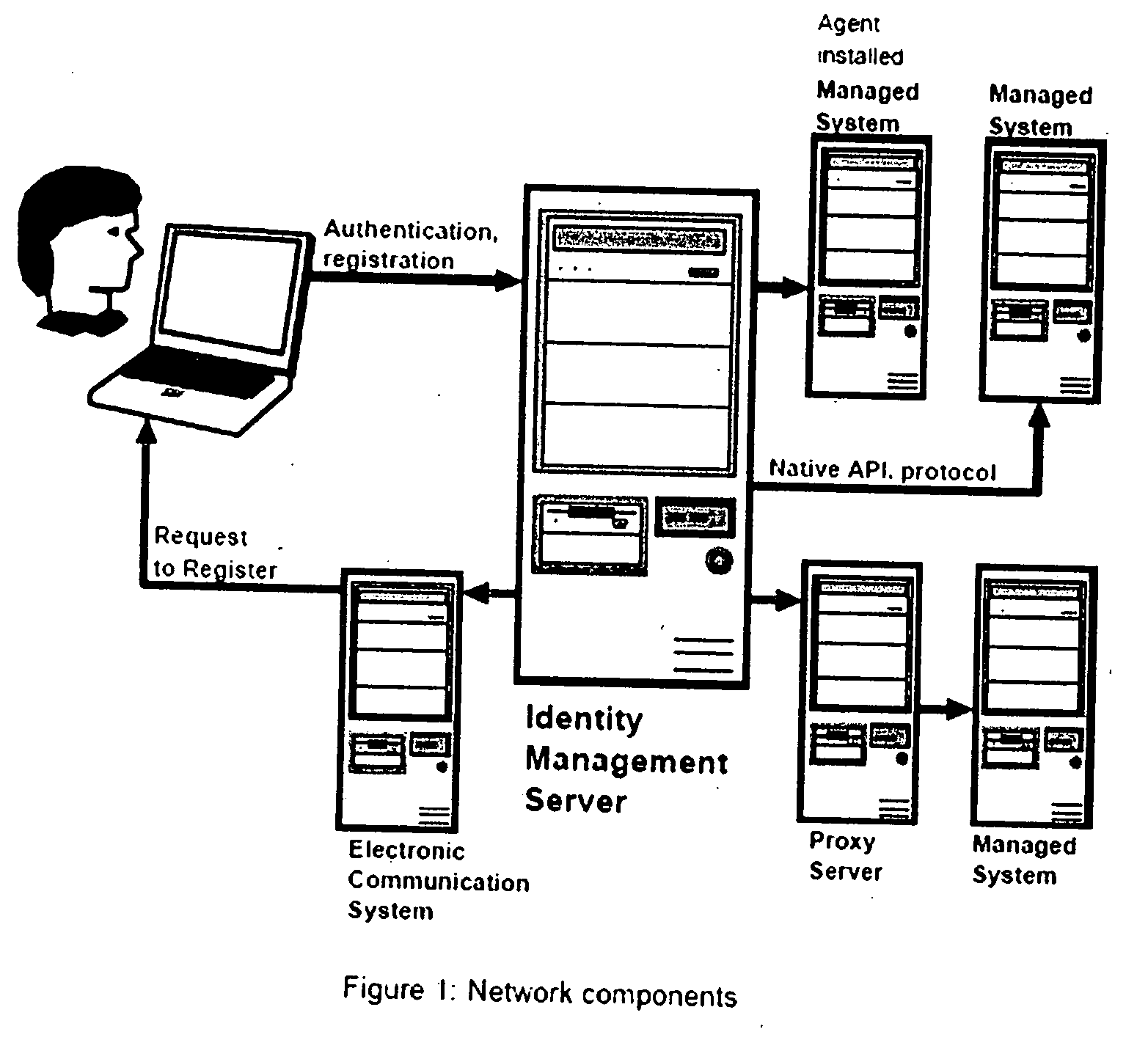Process for automated and self-service reconciliation of different loging IDs between networked computer systems
a networked computer system and log id technology, applied in the field of automatic and self-service reconciliation of different log ids between networked computer systems, can solve the problems of manual cleanup, security vulnerabilities, incomplete results of approximate matches on attributes,
- Summary
- Abstract
- Description
- Claims
- Application Information
AI Technical Summary
Benefits of technology
Problems solved by technology
Method used
Image
Examples
Embodiment Construction
—FIG. 1-NETWORK COMPONENTS
[0027] Definition: Managed System
[0028] A managed system may be a computer operating system, database or application where users access some features or data, and where user access must be controlled.
[0029] Definition: Target System
[0030] Please see [27].
[0031] Definition: Platform
[0032] A type of managed system. There are many possible types of platforms, including: [0033] Network operating systems: Windows NT, Windows 2000, Novell NetWare, etc. [0034] Directories: LDAP, x.500, etc. [0035] Host operating systems: MVS / OS390 / zOS, OS400, OpenVMS, Tandem, Unisys, etc. [0036] Groupware and e-mail systems: MS Exchange, Lotus Notes, Novell GroupWise, etc. [0037] Applications: SAP R / 3, PeopleSoft, Oracle Applications, etc. [0038] Database servers: Oracle, Sybase, MSSQL, Informix, DB2 / UDB, etc.
[0039] Definition: User
[0040] Users are people whose access to systems and identity information must be managed.
[0041] Definition: Authentication
[0042] Authenticatio...
PUM
 Login to View More
Login to View More Abstract
Description
Claims
Application Information
 Login to View More
Login to View More - R&D
- Intellectual Property
- Life Sciences
- Materials
- Tech Scout
- Unparalleled Data Quality
- Higher Quality Content
- 60% Fewer Hallucinations
Browse by: Latest US Patents, China's latest patents, Technical Efficacy Thesaurus, Application Domain, Technology Topic, Popular Technical Reports.
© 2025 PatSnap. All rights reserved.Legal|Privacy policy|Modern Slavery Act Transparency Statement|Sitemap|About US| Contact US: help@patsnap.com


